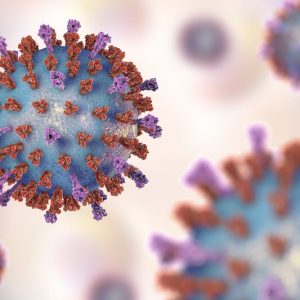DCCR ‘Worked Across the Board’ in PWS Trial, But Results Are Less Clear

Editor’s Note: This is the second of two articles looking at DCCR, Soleno Therapeutics’ investigational treatment, and the DESTINY-PWS trial. The first can be found here.
Likely next steps for diazoxide choline controlled release (DCCR) tablets, a potential therapy for Prader-Willi syndrome (PWS), remain to be known, as discussions continue between Soleno Therapeutics, the treatment’s developer, and the U.S. Food and Drug Administration (FDA).
At issue is how heavily the global COVID-19 pandemic weighted on outcomes of the DESTINY PWS Phase 3 trial (NCT03440814).
Top-line study results showed that DCCR failed to meet its primary goal of significantly reducing hyperphagia — the uncontrollable hunger that is the syndrome’s hallmark symptom.
But a later analysis suggested that the pandemic greatly affected the trial’s outcome. Data collected through to March 1, 2020 — when COVID-19 was declared a national emergency in the U.S. — showed DCCR as superior to placebo in primary and secondary measures of effectiveness, easing both hyperphagia and such behavioral symptoms as aggressiveness, anxiety, and irritability in treated patients.
This prompted PWS advocacy organizations to petition the FDA, asking that it reconsider its request for a new trial.
Prader-Willi Syndrome News spoke with Anish Bhatnagar, MD, Soleno’s CEO, and Jennifer Miller, MD, a lead trial investigator, for more information on DCCR and the DESTINY PWS study.
About 80% of the trial’s 127 participants had completed its 13-week main period before the pandemic led to widespread quarantine measures, Bhatnagar said.
“The changes that were brought about by the pandemic appear to have had enough of an impact on these few patients that the p-value [a common threshold for statistical significance] for the primary endpoint became non-significant,” he said. “The trend for improvement continued. It just so happened that the p-value was not significant.”
Miller — a pediatric neuroendocrinologist at the University of Florida who is following over 600 people with PWS worldwide — agrees fully with this assessment. Some patients continuing with the trial’s long-term extension study (NCT03714373) have now been using DCCR for close to three years, she said, and benefits are accruing.
A weight loss of more than 100 lbs (about 45 kg) over about 1.5 to two years has been recorded in two children in the extension trial, Miller said, an achievement she described as “amazing” and “stunning.”
This degree of weight drop isn’t common with DCCR’s use, she added, because the greater understanding of PWS in place today — a tightly restricted diet and a “locked” home kitchen “or whatever” — limited the severe obesity of most enrolled patients.
“Those that were significantly obese had a much more significant weight loss than those who didn’t have the weight to lose,” Miller said. “But it affected their appetite in the same way … it worked across the board, regardless of the degree of weight loss.”
A significant lessening in some psychological symptoms of PWS was also evident, she said. In particular, Miller noted a 13-year-old girl who spent three hours each night choosing the next day’s school outfit — obsessive and compulsive behavior that disappeared over the course of treatment.
“She came in one day and was like, ‘Dr. Miller, that medicine is working,'” the neuroendocrinologist said. Pressed for reasons why, the girl mentioned no longer being always hungry and always “talking about food,” Miller said, while her mother described her compulsive behavior as “gone.”
Although not all individual benefits have been so dramatic, they have, according to both Miller and Bhatnagar, been consistent.
Notably, the “life-changing” benefits of DCCR, Miller said, have made unprecedented achievements possible for children with PWS, such as taking part in high school sports team, running track, bike riding, and rollerblading.
COVID-19 and the DESTINY trial
The quarantine measures that COVID-19 demanded — from stay-at-home orders to in-person school closures — drastically affected patients’ daily lives and those of their caregivers.
Many children with PWS were in tightly controlled settings outside the home prior to the pandemic, Miller said, with constant supervision at school and in after-school activities.
“You take school away from that equation,” she explained, “and now they’re home and the kitchen is right there, and you’ve got siblings who are eating all day long, and it becomes a hot mess.”
Bhatnagar and Miller both emphasized that this was not the case for all families, given the diversity of people’s home and school situations.
While DCCR has not been “a true miracle” for every person taking it, Miller also noted, “for the patients that it has helped, it’s stunning how much it’s helped.”
That possibility of a safe therapy that provides a reasonable measure of relief was enough to bring more than 26,500 people to sign the FDA petition sponsored by the Foundation for Prader-Willi Research (FPWR) and the Prader-Willi Syndrome Association (PWSA) and respond to an accompanying survey.
Survey respondents described marked improvements in the health and behavior of people with PWS while using DCCR.
To Bhatnagar, these survey responses, reports gathered at a Town Hall meeting in April, and Soleno’s later trial analyses provide “the best indicator [that] the difference that we’re seeing in these analyses is related to the pandemic, rather than anything to do with the drug.”
Weighing next steps
Soleno is evaluating how best to proceed in light of the FDA request, and would like to see the agency take all analyses and survey responses into consideration.
“We believe that it’s worth looking at this full data set. It’s worth the FDA taking their time and doing an evaluation of the full data set, and then making that decision. So we are continuing the conversation with the agency,” Bhatnagar said.
“At the same time,” he added, “we are also thinking through what a new trial might look like, and there’s many challenges in designing a new study at this time with the pandemic going on.”
Two interconnected concerns are the challenges in recruiting a new patient group for a large rare disease trial, and whether available data — and those already treated — might be of use in a future study.
All clinical trial needs to recruit sufficient numbers of patients to generate statistically meaningful data. But recruitment tends to proceed slowly in rare disorders, as relatively few people are affected and many who are can live considerable distances from study sites.
“Any trial has more power to show an effect as more patients are enrolled and more data is collected,” Bhatnagar said.
DESTINY PWS, for instance, opened in May 2018 and reached its full, 127-person enrollment at the close of this January.
Likewise, existing “data could be quite meaningful, [but] it’s unclear how that could impact the size or design of a new study,” Bhatnagar said. “If we’re able to incorporate patients from a prior study, that would be valuable to us, although there’s an obvious built-in bias when you try to include patients who’ve already been exposed to the drug.”
Miller, meanwhile, expressed the hope that all parties remain motivated in pursuing DCCR’s eventual approval.
“I’ve never been in a trial that’s gone as well with Prader-Willi before,” she said.






